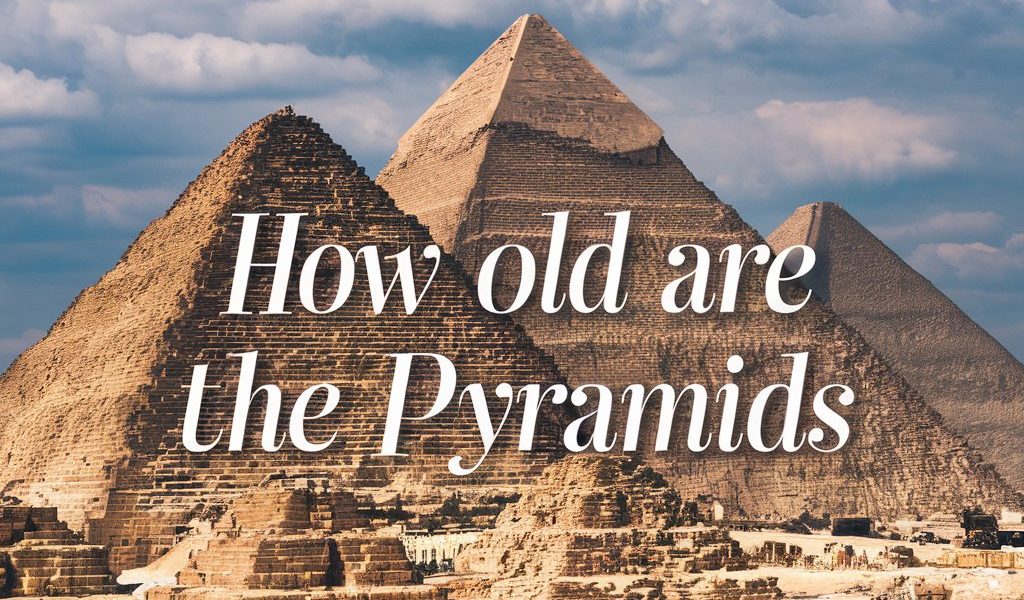How old are The Pyramids
How old are the Pyramids? This question is one of the most frequently asked by visitors to Egypt and history enthusiasts around the world. The answer takes us deep into the heart of ancient Egyptian civilization, offering a glimpse of their remarkable achievements in architecture, astronomy, and religious beliefs.
A Journey Back in Time: Over 4,500 Years Ago
The pyramids of Egypt, especially the famous trio on the Giza Plateau, are more than 4,500 years old. These extraordinary structures were built during the Old Kingdom period, particularly during the Fourth Dynasty of ancient Egypt’s history (c. 2613–2494 BC).
Breakdown of Giza Pyramids and Their Estimated Ages:
-
The Great Pyramid of Khufu (Cheops) – Built around 2580–2560 BC. It’s the largest and most iconic of all pyramids.
-
The Pyramid of Khafre – Built around 2558–2532 BC, notable for appearing taller due to its elevated foundation and still-retaining limestone casing near the top.
-
The Pyramid of Menkaure – Constructed around 2510 BC, the smallest of the three but still grand in design.
So, when people ask, “How old are the Pyramids?” the straightforward answer is: over four and a half millennia old — making them the oldest of the Seven Wonders of the Ancient World.
Scientific Clues to Pyramid Dating
Historians and archaeologists use multiple methods to estimate the true age of the pyramids. Let’s take a closer look at the most reliable techniques:
1. Historical Texts and Records
Inscriptions inside tombs, temples, and surrounding structures document the reigns of the pharaohs who commissioned the pyramids. Ancient papyri such as the Wadi al-Jarf papyri, discovered in 2013, include logbooks of workers involved in transporting limestone for the Great Pyramid.
2. Radiocarbon Dating
Traces of organic materials such as wood, reed matting, and ropes found in the construction areas have been tested through radiocarbon dating. These results reinforce the timeline of pyramid construction during the 26th century BC.
3. Astronomical Alignments
The pyramids are precisely aligned with the cardinal directions and celestial bodies. The layout of the Giza pyramids mirrors Orion’s Belt, a constellation associated with Osiris, the Egyptian god of the afterlife. This alignment supports their dating and shows the advanced knowledge possessed by ancient Egyptian astronomers.
The Religious and Symbolic Purpose Behind the Pyramids
The pyramids were not just tombs — they were spiritual gateways. Ancient Egyptians believed in life after death, and the pyramid shape symbolized the pharaoh’s ascent to the divine. These massive structures were aligned with the heavens to assist the king’s soul in joining the gods.
Each pyramid contained:
-
A burial chamber
-
A mortuary temple
-
Causeways leading to the valley temple
-
Hieroglyphic texts with magical spells for protection
Did You Know?
-
The Great Pyramid contains 2.3 million limestone blocks, each weighing between 2.5 to 15 tons.
-
The construction workforce likely included skilled workers, engineers, and seasonal laborers, not slaves as previously believed.
So, How Old Are the Pyramids—Really?
When someone asks, “How old are the Pyramids?“, it’s not just a matter of dates. It’s about appreciating one of humanity’s greatest engineering feats. With origins dating to around 2580 BC, these monuments have survived millennia of change, remaining as symbols of eternal life, royal power, and national pride.
Explore the Pyramids with Noga Tours Egypt
Ready to experience these ancient marvels in person? At Noga Tours Egypt, we offer unforgettable journeys through history.
Tour Options:
| Experience | Duration | Highlights |
|---|---|---|
| Giza Pyramids & Sphinx Tour | Full-Day | Visit Khufu, Khafre, Menkaure & the Sphinx , Saqqara , Memphis |
| Saqqara Step Pyramid Tour | Half-Day | Explore Egypt’s first pyramid by Pharaoh Djoser |
| Dahshur Pyramids Adventure | Half-Day | Discover the Bent Pyramid and the Red Pyramid |
📞 Call/WhatsApp: +01223358573
🌍 Website: www.nogatours.com
Book your adventure now and discover the true answer to “How old are the Pyramids” with your own eyes.




